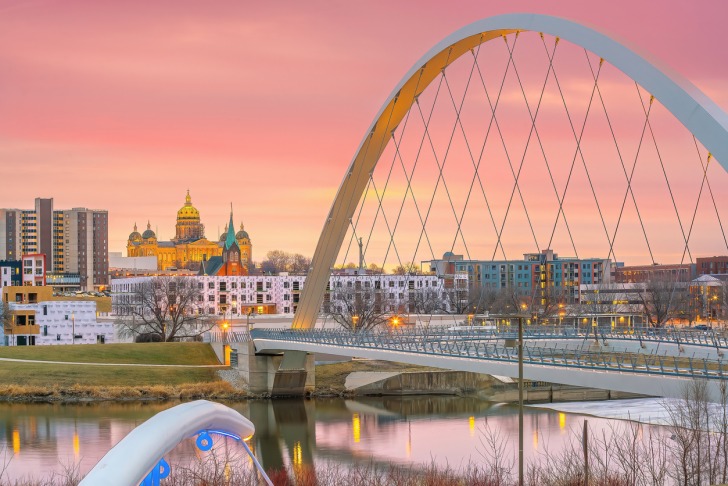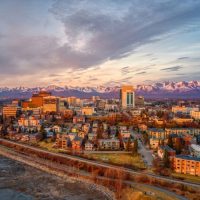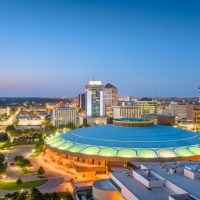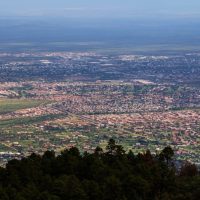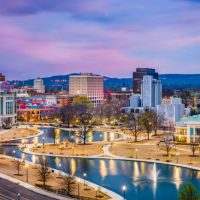Iowa is known for its hills and fields of corn, but what is not as widely known is how cheap it is to live there.
Home prices are the third-lowest in the nation.
It is about 10 percent below the national average overall and has a fairly high level of income.
While Iowa is not the absolute cheapest state, it does have the highest income of the 10 cheapest states in America.
Iowa has a few big cities and a lot of small towns.
Most of the state is covered with farms, with corn and soybean being the most common crops you will see.
Many farms are small family farms, but there are large ones as well.
Contents [show]
12 Cheapest Places to Live in Iowa
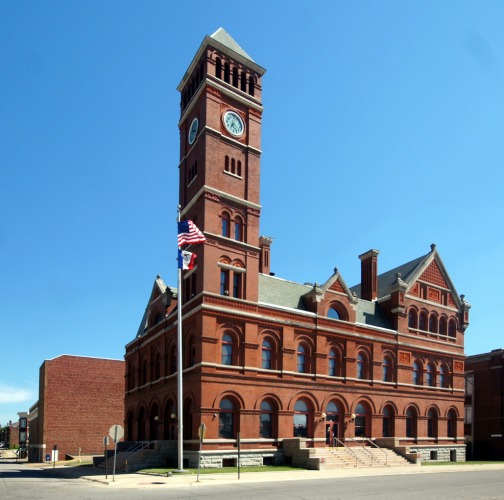
1. Keokuk
Keokuk is a small town of 9,000 on the Mississippi River in the far southeastern corner of the state.
Iowa is known as a low-cost state, and Keokuk is one of the least expensive in Iowa.
Keokuk is 28 percent less than the national average, and 10 percent below Iowa’s level.
You can buy a nice home here for $81,000, less than half the national average.
You can rent a hoist for $800.
A single person can get by on $15,000, and a small family will need $23,000.
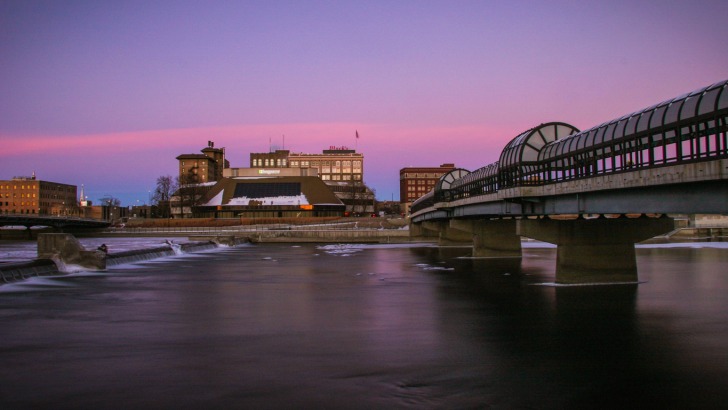
2. Waterloo
Waterloo is a fairly large town with 67,000 and offers very affordable living.
The Cedar River runs through town, and it is not from larger cities in the state.
The cost of living is 25 percent below the national average and 5.5 percent lower than the state average.
You can get a house for 40 percent of the national average, and you can rent for about two-thirds of the national average.
Utilities and groceries are also below the national average.
Healthcare and transportation are slightly higher than national averages.
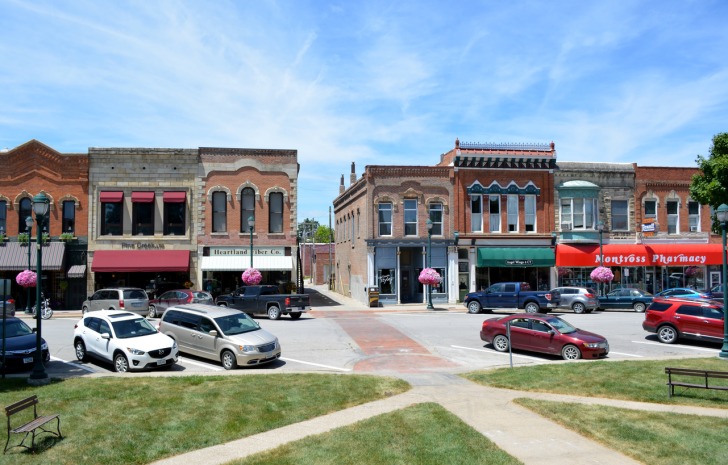
3. Winterset
Winterset is a small town of 5,000, and it is typical of the many small towns in the state.
It is 40 miles from Des Moines, so the big city is not far away.
Winterset is 14 percent cheaper than the national average but is nine percent higher than the state average.
Houses are 33 percent less than the national average, and rent is about 25 percent lower than the national average.
A small family would need $43,000 to live comfortably.
Groceries and utilities are only a few percentage points below the national average, which is a little higher than many places in Iowa.
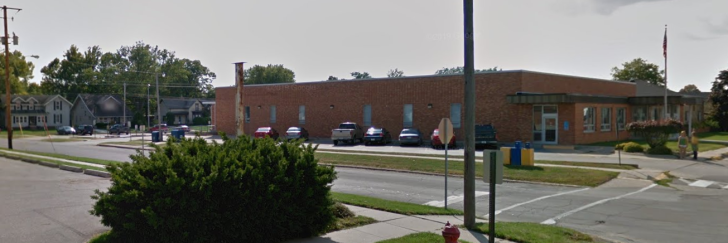
4. Newton
Newton is a bit larger, but still a small town at 15,000 people.
It is 40 miles east of Des Moines and is surrounded by farmland.
Newton is 22 percent less expensive than the national average, and about three percent lower than the Iowa average.
Houses are about half the cost of the rest of the country, and renting is almost as cheap at 40 percent.
A person could live well for $25,000, and a family could do OK at $30,000.
Utilities are slightly above the national average, and that is offset by lower grocery prices.
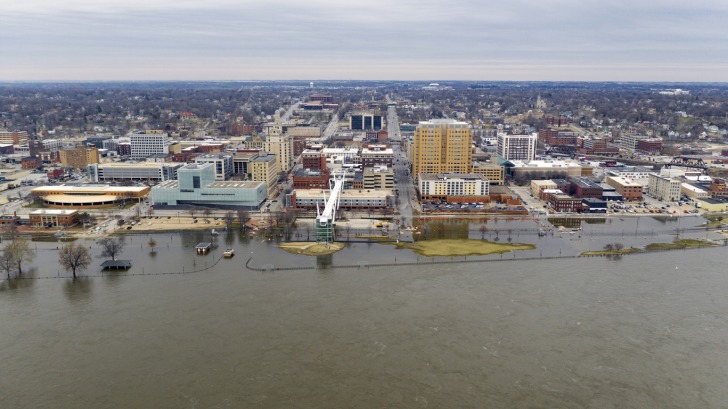
5. Davenport
Davenport is 17 percent less expensive than the national average.
It is about 3.5 percent higher than the state average, which is still low, and the town has a lot of things that offset the costs.
Houses are about half the cost of the national average, and even 10 percent less than the state average.
Rent is 40 percent below the national average.
This is a little unusual for a city of 101,000 people.
You would need about $30,000 per year to live in Davenport.
Low-cost housing is what makes Davenport a good deal.
Groceries are just slightly lower than the national average.
Health care is a little higher than the national average.
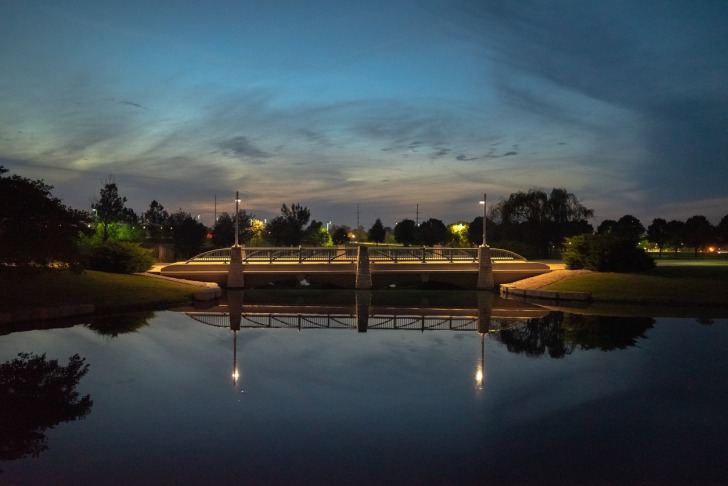
6. Council Bluffs
Council Bluffs is just across the river from Omaha, Neb, so you get the benefits of a large city and get to live in a relatively small town of 60,000.
Council Bluffs is 17 percent below the national average and 3.4 percent higher than the Iowa average.
Housing is what keeps costs low.
A house in Council Bluffs will cost 44 percent less than the national average, and even less than the state average.
Rent is 30 percent less than the national average.
Groceries and utilities are about 10 percent below the national average, and slightly higher than the state’s.
You will need $32,000 to live in Council Bluffs, and with Omaha nearby there should be jobs available.
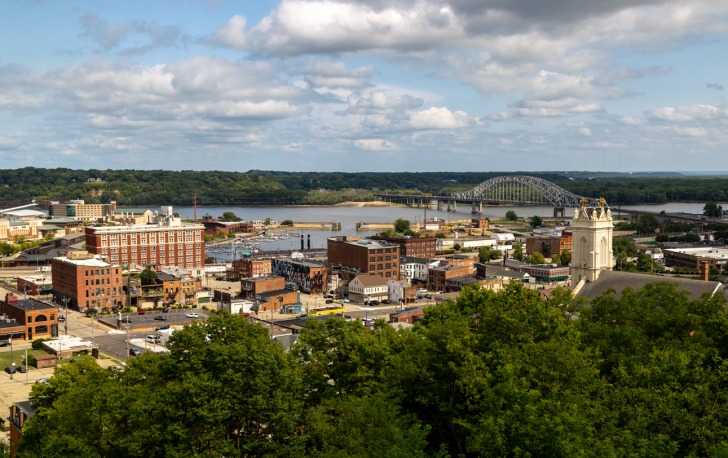
7. Dubuque
Dubuque is the oldest town in Iowa and was once the capital.
It is still a very nice town with 58,000 people.
It is on the Missouri River in the Northeast corner of the state.
Again, it is housing that keeps costs down.
Dubuque is 16 percent below the national average, and just a few points higher than the state average.
Houses are 38 percent less costly than the national average, and renting is about the same.
It would cost $39,000 for a person to live well in Dubuque.
Utilities are at the national average, and groceries are only a few percent lower.
Both of those are above the state average.
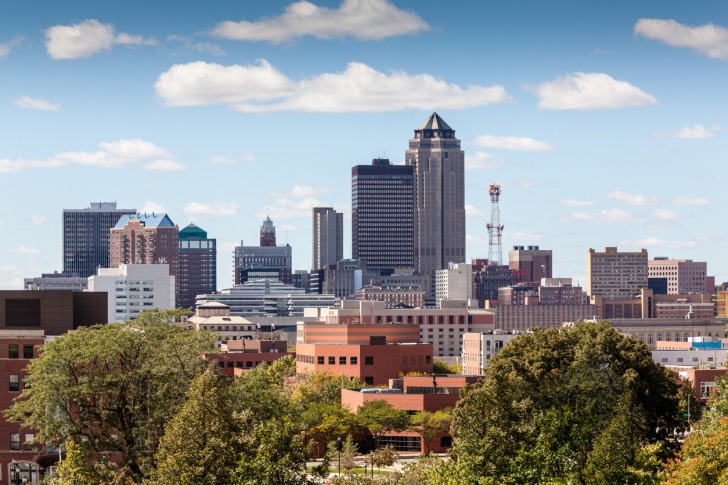
8. Des Moines
Des Moines is a surprise because it is a relatively large city with 212,000 people and it is the state capitol.
Even so, prices are fairly low and there are a lot of good-paying jobs.
Des Moines is 14 percent less expensive than the national average, but it is eight percent above the state average.
Houses are half the cost of the national average, and even 9 percent below the state average.
Rent is 30 percent below the national average.
It would cost $33,000 to live comfortably in Des Moines.
Transportation is significantly lower.
Utilities and groceries are about 8 percent below the national level.
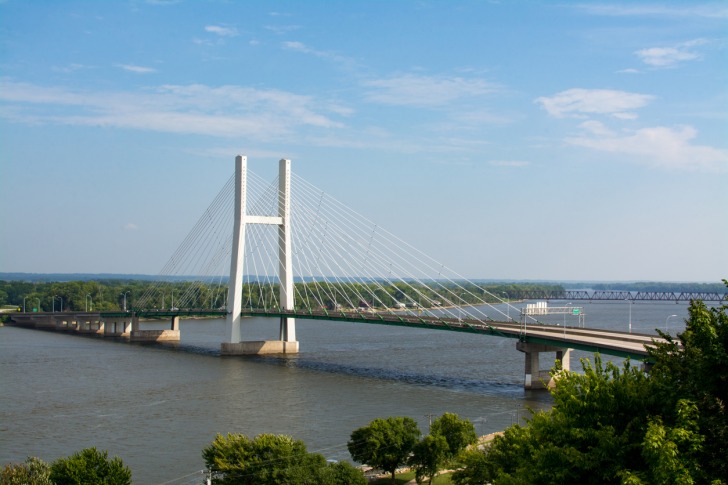
9. Burlington
Burlington is a relatively small town, with 23,000 people, and is on the Mississippi River.
Illinois is on the other side of the river and this is a relatively remote area.
Burlington is 27 percent lower than the national average, and a surprising nine percent below the state average.
Housing is 67 percent, almost two-thirds, cheaper than the rest of the nation.
The rent is 35 percent less.
A single person can live well here for $20,000.
Utilities are at the national average, and healthcare is a little higher, but everything else is significantly less.
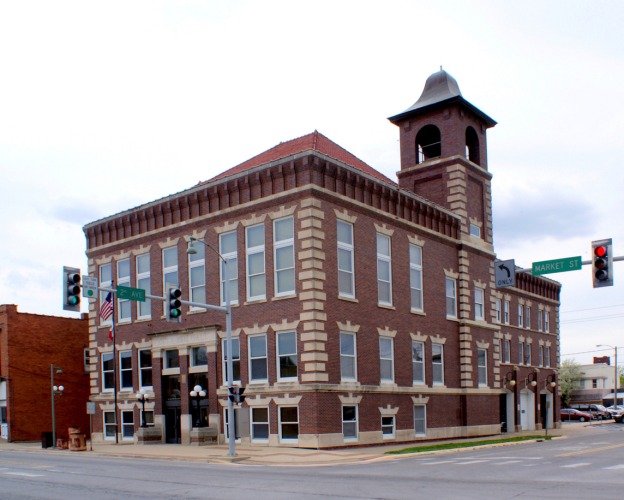
10. Oskaloosa
Oskaloosa is a small town of 12,000 in a rural area of the state, about 60 miles southeast of Des Moines.
Oskaloosa is 25 percent less expensive than the national average and six percent below the state average.
You can buy a house here for $142,000, which is 58 percent below the national average, and even 20 percent below the state average.
Rent is about half the national average.
You would need $27,000 to live comfortably in Oskaloosa.
Healthcare and utilities are a little higher than the national average, and groceries are about six percent below the national average.
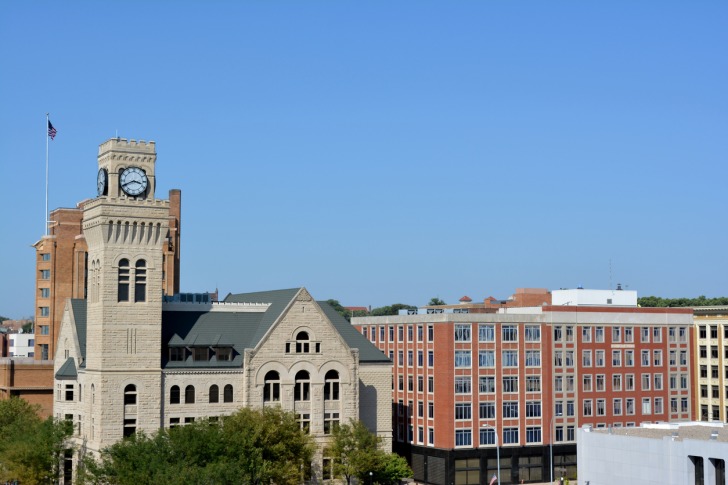
11. Sioux City
Sioux City is one of the lower-cost larger cities in the state.
With a population of 82,000, Sioux City is the fourth-largest city in the state.
It is in the northwest corner of the state, near both Nebraska and South Dakota.
The cost of living is 25 percent below the national average, and five percent below the Iowa average.
A person needs $28,000 to live there.
Housing is slightly less than half the national average and 15 percent below the state average.
Groceries and utilities are about nine percent below the national average, and slightly less than the state average.
Healthcare is more in line with the national average.
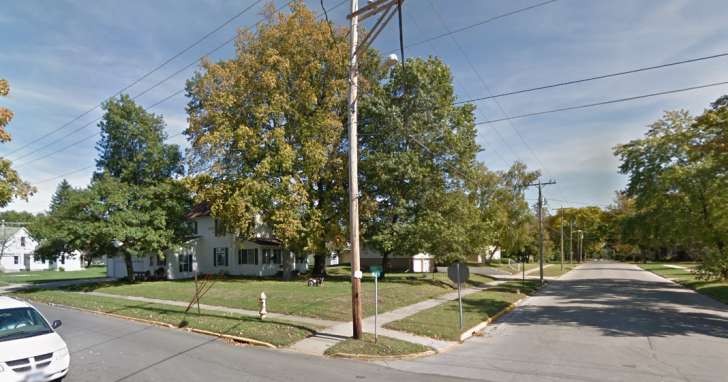
12. Iowa Falls
Iowa Falls is a small town of 5,000 in a fairly remote area of north central Iowa.
The cost of living is 26 percent below the national average, and 7.5 percent below the state average, making it one of the cheapest in the state.
Housing is a whopping 63 percent below the national average, and almost 40 percent below the state average.
Rent is about half the national average.
You would need about $21,000 to be comfortable in Iowa Falls.
Groceries are about six percent below the national average and at the state average.
Utilities are at the national average.
Healthcare is higher than the national average, as it is in many rural areas.
Iowa Safety Overview
READ THE FULL REPORT: Iowa Safety Review
Safety Index:
- OVERALL RISK: LOW
- TRANSPORT & TAXIS RISK: LOW
- PICKPOCKETS RISK: LOW
- NATURAL DISASTERS RISK: MEDIUM
- MUGGING RISK: LOW
- TERRORISM RISK: LOW
- SCAMS RISK: LOW
- WOMEN TRAVELERS RISK: LOW
Frequently Asked Questions
Why are houses so cheap in Iowa?
There are fewer people, and less demand for land, which keeps land prices low.
Fewer people, and not a lot of growth, also lower home prices as there is not as much demand.
The rural nature of Iowa is also part of the reason.
Lower overall costs for building materials and so forth also keep prices lower for houses.
How big is farming in Iowa?
As much as 85 percent of Iowa is farmland.
There are 86,000 farming operations over about 30 million acres.
The average farm size is 350 acres.
Some are a few thousand acres and some are as small as 10 acres.
There are a lot of farming and farm-related jobs in Iowa.
Corn, soybeans, and hay are the major row crops.
Is Iowa growing or shrinking?
Iowa is growing slowly, less than half of a percent per year in recent years.
The fastest growing state is Florida at 1.7 percent.
The growth is not very fast in Iowa, and that helps keep the cost of living lower.
How many small towns are in Iowa?
There are 1,021 registered cities in Iowa, and 150 have less than 100 people.
Just over half the cities in the state have fewer than 500.
There are only three cities with more than 100,000 people and 11 with more than 50,000.
Only 42 of the cities have more than 10,000.
